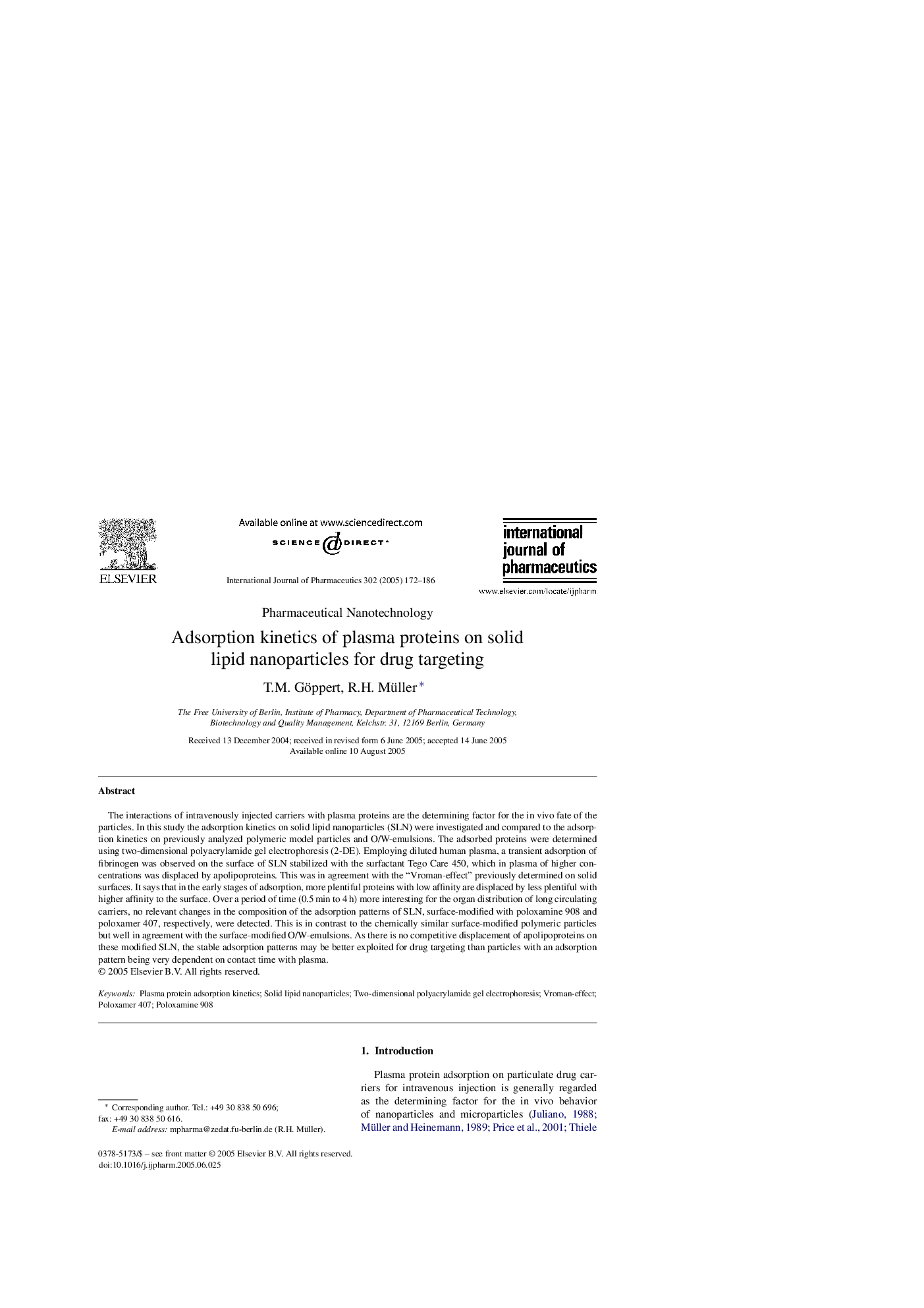| Article ID | Journal | Published Year | Pages | File Type |
|---|---|---|---|---|
| 9918632 | International Journal of Pharmaceutics | 2005 | 15 Pages |
Abstract
The interactions of intravenously injected carriers with plasma proteins are the determining factor for the in vivo fate of the particles. In this study the adsorption kinetics on solid lipid nanoparticles (SLN) were investigated and compared to the adsorption kinetics on previously analyzed polymeric model particles and O/W-emulsions. The adsorbed proteins were determined using two-dimensional polyacrylamide gel electrophoresis (2-DE). Employing diluted human plasma, a transient adsorption of fibrinogen was observed on the surface of SLN stabilized with the surfactant Tego Care 450, which in plasma of higher concentrations was displaced by apolipoproteins. This was in agreement with the “Vroman-effect” previously determined on solid surfaces. It says that in the early stages of adsorption, more plentiful proteins with low affinity are displaced by less plentiful with higher affinity to the surface. Over a period of time (0.5Â min to 4Â h) more interesting for the organ distribution of long circulating carriers, no relevant changes in the composition of the adsorption patterns of SLN, surface-modified with poloxamine 908 and poloxamer 407, respectively, were detected. This is in contrast to the chemically similar surface-modified polymeric particles but well in agreement with the surface-modified O/W-emulsions. As there is no competitive displacement of apolipoproteins on these modified SLN, the stable adsorption patterns may be better exploited for drug targeting than particles with an adsorption pattern being very dependent on contact time with plasma.
Keywords
Related Topics
Health Sciences
Pharmacology, Toxicology and Pharmaceutical Science
Pharmaceutical Science
Authors
T.M. Göppert, R.H. Müller,
